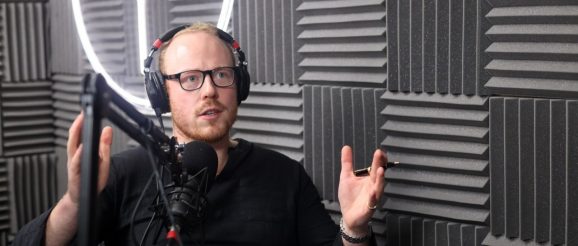Instant gratification dictates innovation: chatting with Myleene Klass and HelloFresh | The Drum

On my weekly podcast Success Is In The Mind, I speak to owners, entrepreneurs and founders of scale-up businesses about personal and business barriers, successes, knockbacks and innovation.
4,000 ads, TikTok and attention
As we know, the average person is exposed to between 4,000 and 10,000 adverts per day. This has fundamentally changed how we consume and respond to content.
When I spoke with pop-singer-turned-entrepreneur Myleene Klass, it was no surprise to me that when starting her recent business My Supper Hero, a pillar of its go-to-market strategy was to align its marketing with the TikTok generation. She wanted the ability for people to learn at speed. She calls this “more chatting less chopping.”
On average, TikToks range between 15-20 seconds. This caters to those shortened attention spans. The first few seconds are crucial. With people thumbing through vast quantities of content, if they aren’t pulled in instantly, they won’t stick around.
Shortening attention spans command the need for instant gratification. Klass said: “The way we consume media these days is fast, really fast – nobody wants to watch 30 minutes of how to make something anymore. The other day, 100,000 watched me make a fish last night for my fiancé – what can I say?” Klass’s business My Supper Hero delivers high-end, packaged meals to individuals who are time-poor but quality-focused.
Limiting attention demands: Thursday
Innovative businesses are being formed in this space all the time, focusing on monetizing the shortening of our attention spans.
The co-founder of dating app Thursday joined me in a recent podcast episode. I was impressed by how fast Matthew McNeill Love and co-founder George Rawlings had grown Thursday and the USP behind the app. The co-founders are aiming for a £50m valuation by mid-2022.
When we think of a dating app, most of us picture Bumble, Hinge or Tinder – an always-on app where you continually swipe left or right, anytime, anywhere.
What McNeill Love and Rawlings have identified is a prime example of how a diminishing attention span can be used as an advantage. Thursday sets out to only let individuals find love one day a week – on a Thursday. This innovative approach has drawn 400,000 downloads. The uplift in users focused directly on the app once a week pushes Thursday into the top of the App Store leader boards almost weekly. “It’s because people don’t get ‘bored’ of the platform and aren’t being forced to use it daily,” says Matthew. It’s clear that generation Z and millennials – the primary users of both Thursday and TikTok – respond positively to instant gratification. These generations have eight-second and 12-second attention spans respectively.
Marketing to the time-poor: HelloFresh
Freddy Ward, founder of Wild Deodorants and one of the original five employees at HelloFresh, spoke to me about how they accidentally identified data-driven marketing and designed an offline version of what Facebook (Meta) is today.
HelloFresh was coming to the end of the month 50 sign-ups short of its target that quarter. Ward and his team decided to head to the nearest train station in London to hand out flyers. The proposition for HelloFresh was packaged food for time-poor individuals.
Analyzing the data after handing out cricket bags full of flyers, Ward identified that people catching the train, jumping on a tube or passing through the station were time-poor, based in London and likely employed. This was the perfect target market.
It was over the next 18 months that Ward and his team handed out over 10m flyers, “generating a 10x return at least” says Ward. Like Thursday, HelloFresh had identified a gap in the market for time-poor individuals, analyzed and assessed its target market perfectly and adapted. HelloFresh underwent an IPO in 2017.
As technology increasingly becomes part of our daily lives, and looking back over the last 20 years from LinkedIn’s founding in 2003 through to Facebook in 2004 and YouTube in 2005, there’s a clear parallel between the need for instant gratification and the diminishing attention spans of the population.
Increasing interactivity online and offline and the ‘need for speed’ will dictate how the brands of the future innovate, diversify and reward their customers and users.
